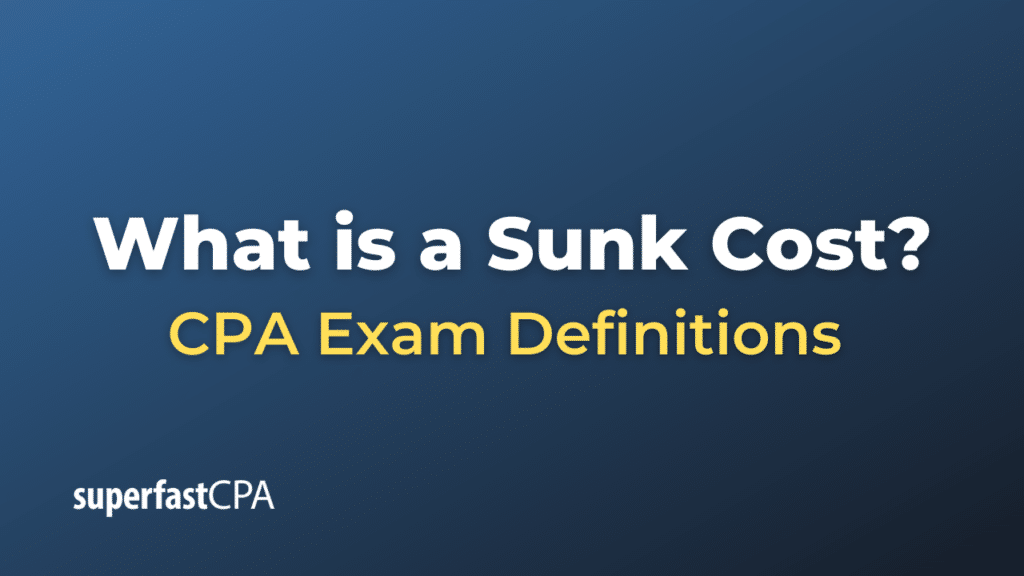Sunk Cost
A sunk cost is a cost that has already been incurred and cannot be recovered. In other words, it’s a past cost that cannot be changed or affected by any current or future decision. A crucial concept in economics and business decision-making is that sunk costs should not influence future decisions because they are irrelevant to upcoming costs and benefits.
Key points about sunk costs:
- Irrecoverable: Once a sunk cost is incurred, there’s no way to get the money or resources back, regardless of the decision made going forward.
- Not Forward-Looking: Sunk costs are not relevant for evaluating future investments or decisions. Only future costs and benefits, which are changeable or avoidable, should be considered.
- Emotional Attachment: People often struggle with the sunk cost fallacy, which is the inclination to consider sunk costs in decision-making processes. For example, someone might continue investing in a project because of the amount already spent, even if future prospects are bleak. This can lead to poor decisions, as the individual or company is throwing good money after bad.
Example of a Sunk Cost
Let’s use a relatable, everyday scenario to illustrate the concept of sunk costs.
Scenario: Going to a Concert
Imagine you bought a ticket for a concert for $100 several months ago. The day of the concert arrives, but you’re feeling under the weather and the weather outside is terrible. You’re torn about whether to go or not.
Here’s the decision-making process when considering sunk costs:
- Sunk Cost: The $100 you spent on the concert ticket is a sunk cost. Regardless of your decision to attend or not, you won’t get that money back.
- Decision Time: You now need to decide whether to attend the concert or stay home.
- Sunk Cost Fallacy: You think, “I’ve already spent $100 on this ticket; I should go, or else I’ve wasted my money.” This line of thinking is the sunk cost fallacy. You’re letting a past, irrecoverable expense dictate your current decision, rather than evaluating the present circumstances.
- Proper Decision-making without the Fallacy: Instead of focusing on the $100 already spent, you should consider the current and future costs and benefits:
- Benefits of Going: Experience of the concert, potentially having a good time despite feeling unwell.
- Costs of Going: Risking feeling worse by going out, potential discomfort during the concert, added expense of transportation or snacks.
- Benefits of Staying Home: Resting, potentially feeling better sooner, comfort of your own space.
- Costs of Staying Home: Missing out on the concert experience.
- Outcome: If the current and future benefits of staying home (like resting and potentially recovering faster) outweigh the benefits of attending the concert, the best choice would be to stay home, even if it feels like you’re “wasting” the $100 ticket.
The key takeaway from this example is to avoid letting past, irrecoverable costs influence present decisions. Instead, base your decisions on current circumstances and potential future outcomes.













